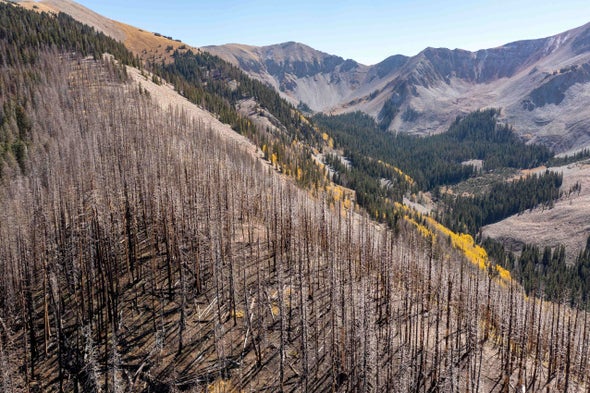A new USDA report finds forests could become a major emitter of carbon by 2070

The loss of carbon absorption is driven in part by natural disasters such as wildfires, tornadoes and hurricanes, which are increasing in frequency and strength as global temperatures rise. The disasters destroy forestland, disrupting their ecosystem and decreasing their ability to absorb carbon, Riley said.
Development in forested areas, which the report projects will continue to increase, is having the same effect as people increasingly move to the so-called wildland urban interface.
Aging forests also contribute. Older, mature trees absorb less carbon than younger trees of the same species, and the U.S. forests are rapidly aging, the report found.
“Naturally, the forest is going to reach a saturation point where it plateaus in how quickly it is sequestering carbon from the atmosphere,” Riley said, explaining why older forests often absorb less carbon.
More aggressive forest management can help by cutting down a small portion of aging forests to make ways for younger trees that absorb more carbon, Riley said. A thorough study of each forest should be done before removing older trees, Riley said, comparing forest management to prescribing the proper drugs to a patient.
Monday’s report considered a range of factors such as the speed of global warming, population growth and energy transition in making dozens of projections on forest size, land use change, wildfire risk, and the ability of forests to absorb and store carbon.
Reprinted from E&E News with permission from POLITICO, LLC. Copyright 2023. E&E News provides essential news for energy and environment professionals.
ABOUT THE AUTHOR(S)
Minho Kim is an intern at E&E News.


